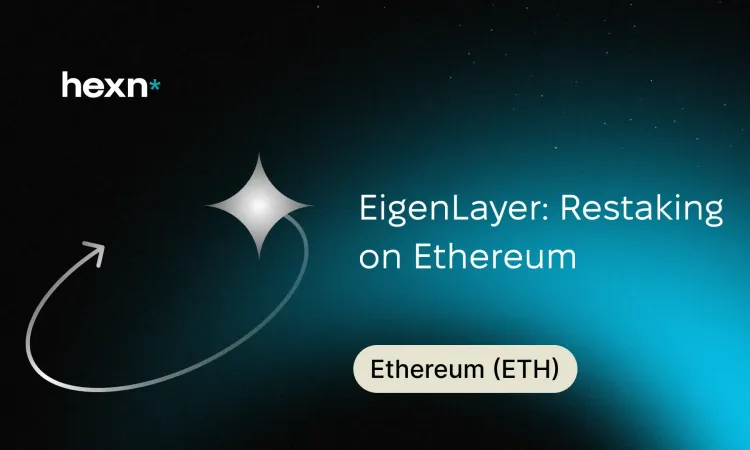EigenLayer: Restaking on Ethereum
EigenLayer is a protocol that lets Ethereum stakers put their secured ETH to work in new ways. By allowing a second layer of validation—often called restaking—it gives developers access to shared security and offers stakers more ways to earn, while introducing novel trade-offs in complexity and decentralization.
How EigenLayer Lets ETH Do More
At its core, EigenLayer builds on Ethereum’s Proof-of-Stake system and creates a marketplace of trust. Instead of staking ETH solely to secure the base chain, token holders can opt to restake via EigenLayer contracts so their stake also backs specific applications or services. That pooled security can shorten the time and cost for projects to gain reliable validation.
Understanding EigenLayer’s Modular Security Model
What Are Modules?
EigenLayer breaks security into discrete modules. Each module represents a particular function that needs validation—examples include decentralized storage, in-game item registries, or DeFi primitives. Project teams pick the modules that match their requirements, and stakers decide which modules to support.
Smart Contracts and Restaking Mechanics
Restaking works through EigenLayer smart contracts that attach additional conditions to already staked ETH. Those contracts enable assets to provide security to modules without unstaking from Ethereum itself, effectively letting one stake serve multiple purposes under controlled rules.
Restaking Modes: Solo Node Operators vs. Delegators
Restaking can be carried out in two main ways:
- Solo staking: technically proficient users run their own nodes and validate module activity directly.
- Delegation: users delegate validation responsibilities to operators, which simplifies participation for non-technical stakers.
EigenLayer recognizes that participants vary in resources and risk appetite, so modules can set different requirements to attract a diverse set of stakers.
Actively Validated Services (AVS)
Some services require ongoing, active validation—EigenLayer calls these Actively Validated Services (AVS). High-stakes examples include certain DeFi protocols, cross-chain bridges, or other infrastructure where continuous checks improve safety. AVS relies on restakers to provide that extra level of assurance.
How EigenLayer Staking Differs from Traditional Staking
Liquidity and Utility of Staked ETH
Traditional staking typically locks ETH to secure the main chain. EigenLayer keeps the ETH staked while letting it also secure modules, effectively increasing the utility of the same asset without immediate unstaking.
Participation Choices and Reward Dynamics
Standard staking generally involves locking tokens and receiving protocol rewards. EigenLayer expands participation options—stakers can choose solo operation or delegation and pick modules that align with their desired reward-risk profile. Modules with greater security demands may offer higher incentives to attract stronger staking support.
Where Security Responsibility Shifts
With conventional staking, funds contribute directly to Ethereum’s global security. EigenLayer makes security more granular: the safety of each module depends on how much collective stake it attracts and how that stake is managed.
EigenLayer Airdrops
EigenLayer planned its token distribution across multiple airdrop seasons, dedicating a portion of total supply to reward early and active participants. About 15% of the token supply was set aside for distribution across these seasons.
Season 1 Details
Season 1 began in mid-2024 with a first phase allocating roughly 6.7% of total supply. A snapshot used to determine eligibility was taken on March 15, 2024, and the initial claim window extended through early September 2024. Eligibility criteria included activities such as restaking ETH or holding certain LSTs during the snapshot window, participating in governance, and contributing to module development or community efforts.
Season 1, Phase 2 and Beyond
The second phase of Season 1 targeted long-term protocol supporters, including users active on several DeFi platforms prior to the snapshot date. Season 2 was announced to consider activity after the March snapshot, but exact distribution details were to be shared later.
How to Claim
- Connect a compatible wallet to the official claim portal.
- Verify your eligibility and follow the on-screen claim steps.
- Be careful: always confirm you are using the authentic claim interface to avoid phishing attempts.
At the time of the first season, tokens distributed were not immediately transferable but could often be staked or delegated once claimed.
Security Improvements for EigenDA and Network Protections
EigenLayer has taken steps to harden EigenDA, its data availability platform, against common attack vectors. Key upgrades focused on preventing Sybil attacks—where attackers create many fake identities—and mitigating DDoS traffic that can overwhelm services.
- Sybil prevention: enhanced identity checks and detection rules to limit influence from fabricated nodes.
- DDoS mitigation: traffic filtering and rate-limiting to preserve service availability for legitimate users.
- Continuous monitoring: real-time traffic analysis and anomaly detection to spot and respond to incidents quickly.
Benefits and Risks
Primary Benefits
- Stronger security for DApps: shared validator resources can raise the safety baseline for many applications.
- A testing ground for innovation: projects can trial new features and designs with existing security instead of creating their own validator sets.
- Permissionless experimentation: developers can launch services without building full validation infrastructure, lowering technical and financial barriers.
Main Risks and Trade-Offs
- Added complexity: restaking, selecting modules, and managing node operations increase the learning curve for users.
- Centralization pressure: a few large staking operators could dominate restaking pools, concentrating influence.
- Module collusion risk: the modular design can create avenues for coordinated bad actors if multiple modules are controlled by the same parties.
Why EigenLayer Matters
EigenLayer’s restaking model offers a novel path to scale security across a broader range of services while lowering the cost of getting secure validation. That makes it attractive to developers and stakers seeking more options, but it also raises governance and safety questions that the community must address. Whether EigenLayer becomes a standard part of Ethereum’s infrastructure will depend on how well its ecosystem manages complexity, decentralization, and incentives.
